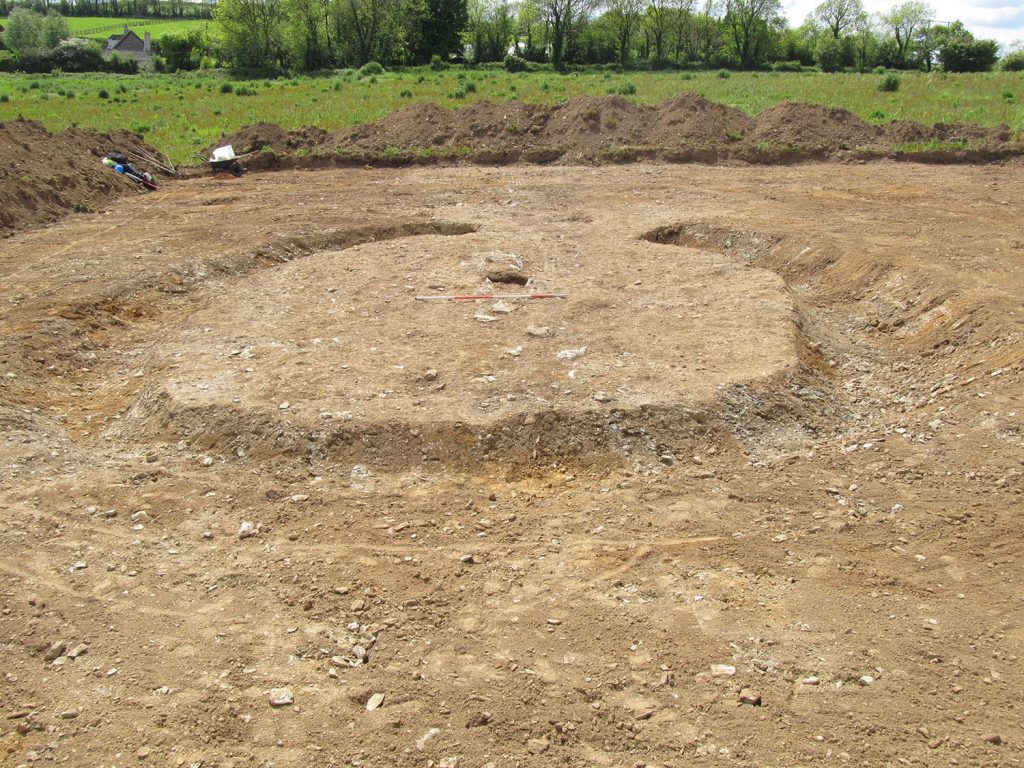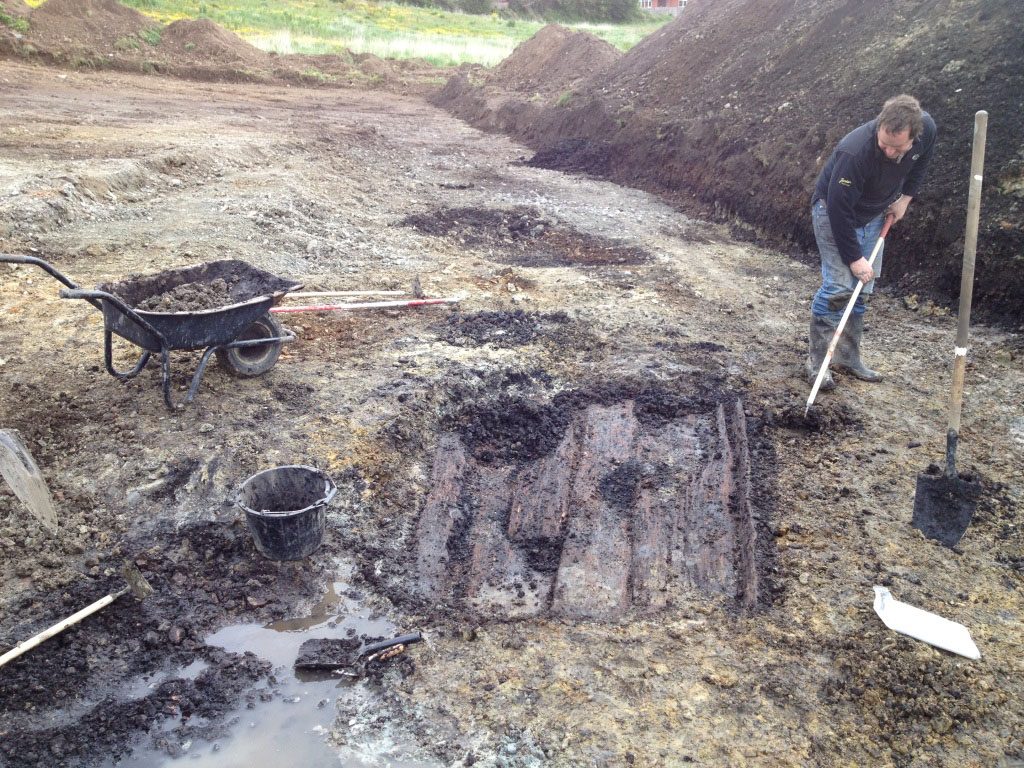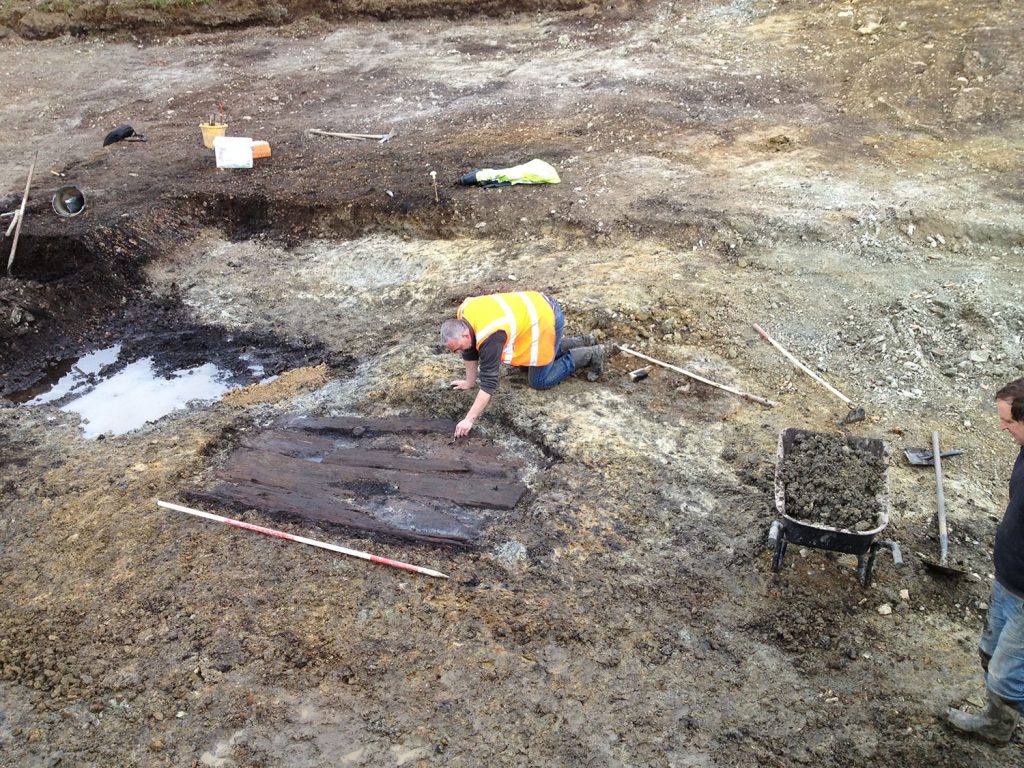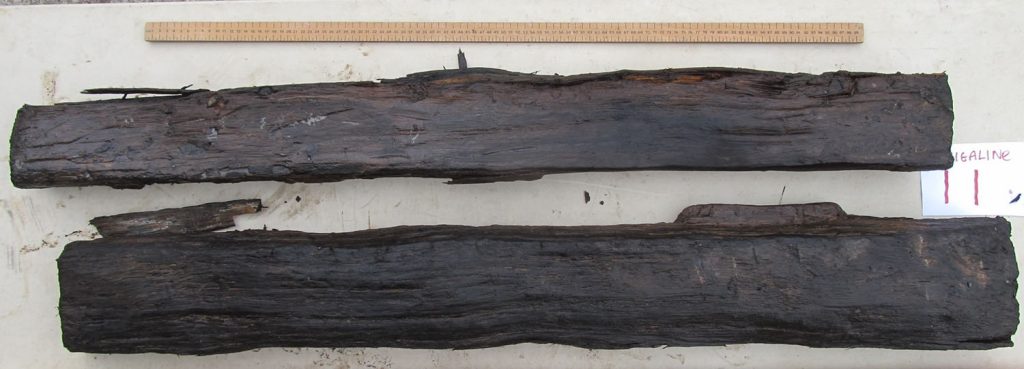In 2014 AHP investigated several archaeological sites in the environs of Carrigaline, Co. Cork.
At a proposed school site in Ardnacloghy townland, a Bronze Age burnt mound and ring ditch were revealed. The burnt mound was several connected mounds, now levelled, from chronologically separate periods. One pit was early Bronze Age (2201-2031 BC), another middle Bronze Age (1410-1220 BC), and yet another, oak plank lined pit was from the late Bronze Age (1075-945 BC). Burnt mounds, or fulachta fia, are an extremely common Irish monument type, particularly in Cork. They are diagnostic of the Bronze Age, and used in a range of activities where hot water was required. Evidence for the specific activity or activities carried out rarely survive. Overlooking these pits was a ring ditch (12 m diameter) which was dated to the middle Bronze Age. No artefacts or human remains were recovered.
Further burnt mound sites were identified on the proposed Western Relief Road. Pits in Carrigaline West, dated to the late Bronze Age (1108-925 BC). Pits in Kilmoney dated to the Chalcolithic period (2456-2205 BC) (i.e. the Neolithic/Bronze Age transition).
A second burnt mound in Kilmoney was located adjacent to a palaeochannel/ spring. Again, this was a site returned to in different periods, with pits dating to the early and middle Bronze Age. Ironworking also occurred at the site during the Iron Age (372-45 BC).

 Late Bronze Age ring ditch.
Late Bronze Age ring ditch. Uncovering a Bronze Age plank-lined pit.
Uncovering a Bronze Age plank-lined pit. Final touches before recording
Final touches before recording Planks lifted and wrapped.
Planks lifted and wrapped. Close up of the oak planks after lifting.
Close up of the oak planks after lifting.